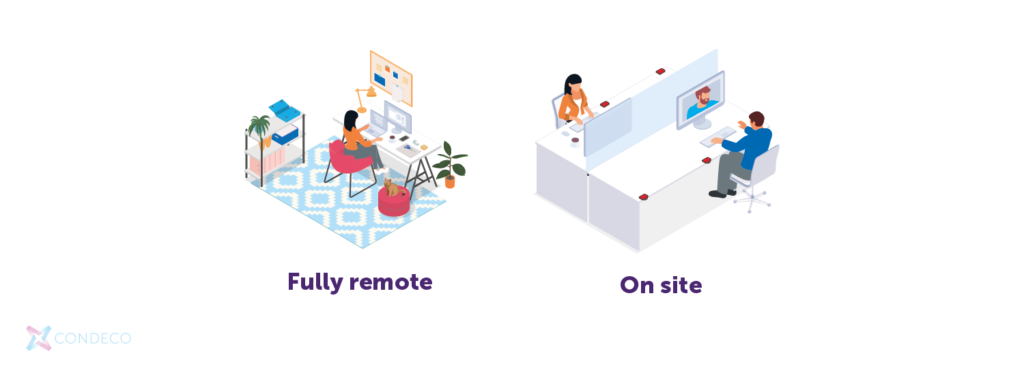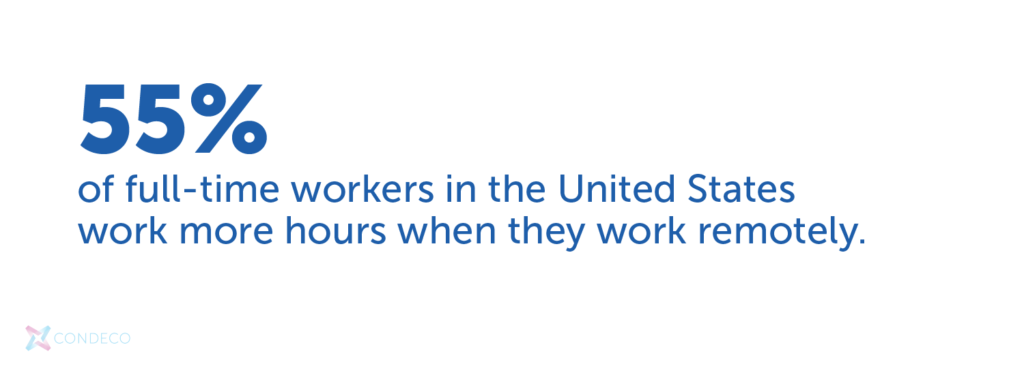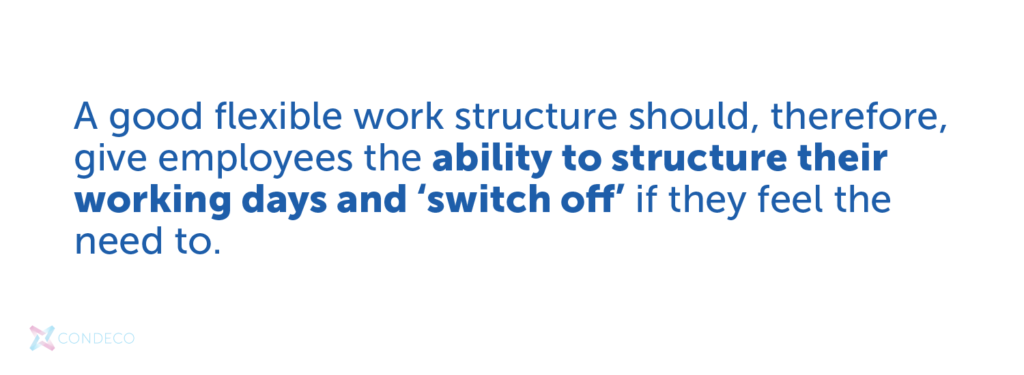
Two years on from the outbreak of COVID-19, businesses around the world are gradually moving towards new ways of working for the long-term. But there’s still lots to be decided and refined.
Every business is different, and working out what ideal flexible work strategies look like will take time, as well as careful consideration. What is clear is that businesses have to strike a balancing act to ensure employees can maximize their productivity. If a flexible work policy is too rigid, then it will hamper the work (and motivation levels) of lots of employees for whom the policy is unsuitable. If it’s too loose, then work quickly turns into a free-for-all where coordinated collaboration becomes impossible.
In this blog, we’ll explore the key factors around getting that balance right, and ensuring that every employee within an organization can be at their most productive, wherever and whenever they work.
How is flexible work defined?
Flexible work is one of the most talked-about subjects in the world of business today. After all the forced change of the COVID-19 pandemic, businesses are looking forward, towards operating at their best in a very different world of work.
The impact of flexible work on productivity
As flexible work becomes embedded within an organization, the positive impacts begin to spread throughout the workforce. While an employee-centric model is vital for talent attraction and retention, the business as a whole enjoys better outcomes, too.
Employees who aren’t losing huge chunks of their day to commuting have more time to devote to work-related tasks. Additionally, by being able to focus on their work – either at home or in the office, as fits their requirements – their productivity will stay high every day.
Does flexible work benefit everyone?
Ultimately, flexible work is a win-win situation for employees and employers. Businesses who implement it successfully will quickly find the positives of doing so spreading throughout their organization:
- Increased productivity
- Reduced costs
- More positive company culture
- Better green credentials
- Better brand reputation
- Improved diversity business-wide
- Chance to innovate and pursue digital transformation
How to structure flexible work for productivity
Connect people and places
When the pandemic forced entire organizations to operate remotely, virtual meetings through tools like Zoom and Microsoft Teams were the natural choice. But as a more flexible future emerges, it’s easy to foresee a situation where collaboration becomes awkward, with some people in the office, some people working remotely, and employees moving from one to the other day by day.

The key to solving this issue is to make it as easy as possible for meetings to be organized. In an ideal scenario, organizers can use one platform to search for a meeting room that’s available at the chosen time, make a booking, and check the schedules of all attendees to ensure everyone can make it. Invites can then be issued through the platform automatically when bookings are made, and video call details can be distributed so that virtual attendees can easily connect. If audio-visual equipment isn’t permanently installed within the chosen meeting room, this can be ordered for set-up by the facilities or IT teams for the start time of the meeting in question.
Enable the ability to ‘switch off’
Remote working may be more convenient for many employees – but that doesn’t automatically mean that it’s any more relaxing. In lots of cases, the time that employees have saved by not having to commute has been soaked up by working longer hours: indeed, Owl Labs research has found that 55% of full-time workers in the United States work more hours when they work remotely.

This can easily lead to burnout issues, and the isolation that can come with regular remote work won’t help matters. A good flexible work structure should, therefore, give employees the ability to structure their working days and ‘switch off’ if they feel the need to. Alongside this, it’s important that businesses put in place measures to keep abreast of their employees’ well-being, check in with them on a regular basis, and potentially use the office as a place where face-to-face support can be given if needed.

Give individual employees choice
The previous point can actually be taken much further, and employees can actually be given full autonomy to decide where and when they work, as long as the operations of the business aren’t compromised too much. Employees don’t have to be constrained by being forced to come into the office on designated days of the week: instead, office visits can be purpose-driven, where employees travel in for specific reasons like meetings, socializing or training.
Technology is vital to making this practical. One overarching workspace management platform from which employees can book workspaces for their office days, and update their status so other employees can see where and when they’re operating, makes the whole process run much more smoothly. This platform should be cloud-based, so that employees can access the system from any place, at any time, and from any device.
Create a culture of trust
People work their best when they aren’t micromanaged. Trust that people will get their work done regardless of where they work.
Set core hours
This is critical when it comes to maintaining productivity. Provides the flexibility needed for people to work when they are at their most productive and to sustain a work-life balance, whilst also allowing for collaboration between teams.
Hold regular one-to-one meetings
People’s progression shouldn’t stop just because of where they work. Flexible work means managers must work extra hard to connect with their team, and showing that you are still invested in their development and progression will keep people motivated, productive and engaged.
Host daily stand-ups
This can be team, department or company-wide, and gives everyone a set time to get questions answers and to ask for anything they need. Conduct this during core working hours and people will feel a sense of ownership over their workload.



